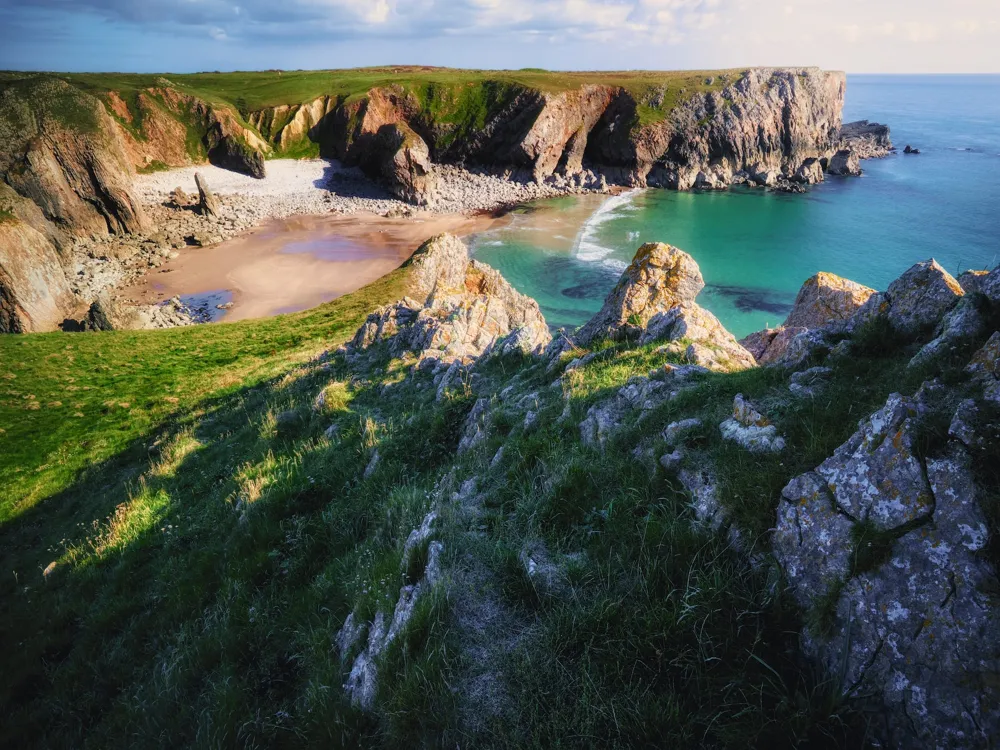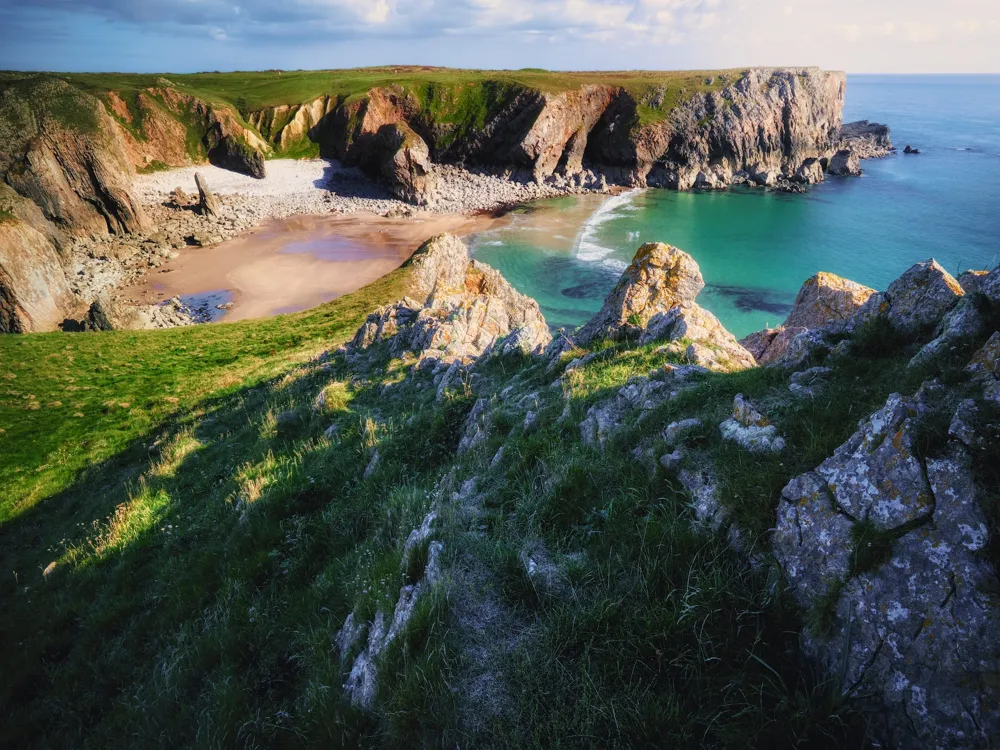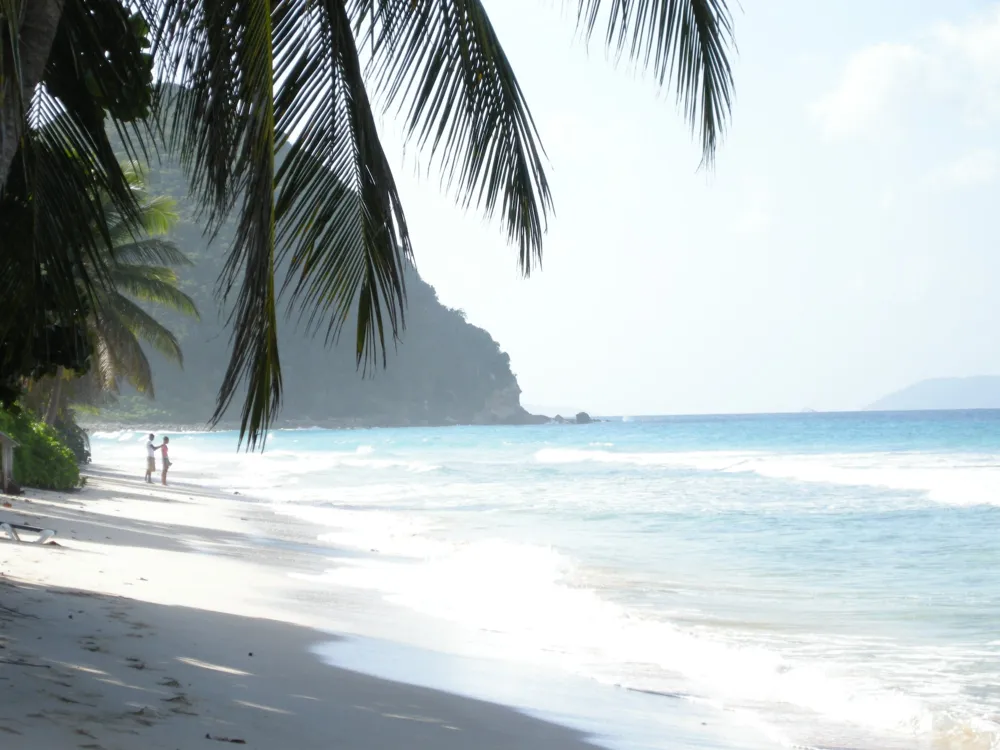Halong Bay, a UNESCO World Heritage Site since 1994, is one of Vietnam's most iconic tourist destinations, drawing visitors from around the globe. Known for its emerald waters and thousands of towering limestone islands topped with rainforests, Halong Bay offers a breathtaking blend of serene beauty and natural wonder. Covering an area of around 1,553 square kilometers, the bay features approximately 1,960–2,000 islets, most of which are limestone. The core of the bay has an area of 334 square kilometers with a high density of 775 islets. The name 'Halong' translates to 'where the dragon descends into the sea', and according to local legend, the islands were formed by a great dragon from the mountains. As it charged towards the coast, its tail gouged out valleys and crevasses. Upon reaching the sea, the area filled with water, leaving only the pinnacles visible. This fascinating folklore adds to the allure of Halong Bay, making it not just a natural wonder, but also a place steeped in myth and history. Geologically, Halong Bay is the result of millions of years of complex processes, involving underwater limestone formation, tectonic activity, and sea level changes. These processes have sculpted the limestone karsts into a variety of shapes and sizes, some of which are hollow, featuring enormous caves. The bay's landscape is constantly evolving, with the limestone being slowly eroded by wind, rain, and sea water, creating the unique scenery that we see today. From a biodiversity standpoint, Halong Bay is incredibly rich. It supports various ecosystems, including coral reefs, freshwater swamp forests, and mangrove forests. The bay is also home to numerous species of birds, fish, and marine animals, making it an essential site for biological research and conservation. Halong Bay is famous for its stunning caves, each offering a unique adventure. The Sung Sot Cave, also known as the Surprise Cave, is one of the largest and most popular. It's known for its impressive stalactites and stalagmites. Another notable cave is the Dau Go Cave, known for its large, colorful stalactites and stalagmites. Apart from the caves, visitors can explore the bay's numerous islands, many of which are uninhabited. Some popular islands include Cat Ba Island, the largest island in Halong Bay, home to diverse landscapes and the endangered Cat Ba langur. Floating villages like Cua Van and Vung Vieng offer a glimpse into the traditional lifestyles of the local fishermen. The architecture of Halong Bay is not about man-made structures, but about the natural architecture crafted by geological and environmental forces over millions of years. The limestone karsts and isles in various shapes and sizes form a spectacular natural architecture that's unique to this region. Each island and cave tells a story of geological history and natural processes. The limestone formations of Halong Bay are primarily made of calcium carbonate, which has accumulated over millions of years. These formations have undergone significant transformations due to various geological processes such as erosion and sedimentation. The result is a breathtaking landscape of pillars, arches, and caves that create a natural architecture of immense beauty and complexity. The most prominent feature of Halong Bay's architecture is its towering limestone karsts. These karsts have undergone different stages of development over the last 20 million years, creating a variety of shapes and sizes. Some are tall and slender, rising majestically from the sea, while others are wider and more robust. The process of karst formation involves the dissolution of soluble rocks such as limestone, dolomite, and gypsum. It is this process that has given rise to the intricate cave systems within these karsts. Among the caves, the most famous are the Sung Sot Cave, Dau Go Cave, and Thien Cung Cave. These caves are adorned with stalactites and stalagmites in various forms and sizes, some resembling human figures, animals, or mythical creatures. The play of light and shadow within these caves creates an ethereal atmosphere that leaves visitors in awe. The bay's unique landscape also includes numerous islands, each with its distinct shape and character. Cat Ba Island, for example, is not only the largest island in Halong Bay but also boasts a rich biodiversity, with its national park being home to various species of flora and fauna. The limestone pillars and islets have gone through a process of erosion, creating notches and arches that add to the picturesque beauty of the bay. Water has played a crucial role in shaping the natural architecture of Halong Bay. Over time, the rise and fall of the sea have led to the erosion of the limestone, carving out caves, grottoes, and creating the unique limestone pillars. The tides, waves, and currents have sculpted the limestone into the shapes that mesmerize visitors today. The ecological diversity of Halong Bay is an integral part of its natural architecture. The bay supports various ecosystems, including coral reefs and mangrove forests. These ecosystems not only add to the bay's natural beauty but also play a vital role in maintaining the environmental balance. The best time to visit Halong Bay is during the spring (March to May) or autumn (September to November) months for more moderate temperatures and clear skies. Selecting the right cruise is essential for the best experience. Consider the length of the cruise, the size of the boat, and the itinerary when booking. Bring lightweight clothing, swimwear, sun protection, and comfortable footwear. Don't forget to pack a camera to capture the stunning scenery. Reaching Halong Bay is convenient from Hanoi, the capital of Vietnam. The most common way to get there is by road, which takes about 3-4 hours. Visitors can also opt for a seaplane from Hanoi, offering an aerial view of the bay, or travel by train to Hai Phong and then take a ferry to Cat Ba Island, followed by a boat to Halong Bay.Overview of Halong Bay
Exploring the Caves of Halong Bay
Island-Hopping and Floating Villages
Architecture of Halong Bay
The Role of Water in Shaping the Bay
Ecological Diversity in the Architecture
Tips When Visiting Halong Bay
Best Time to Visit
Choosing a Cruise
Packing Essentials
How To Reach Halong Bay
Cat Co 3
Halong Bay
₹ 15,260 onwards
View halong-bay Packages
Halong-bay Travel Packages
View All Packages For Halong-bay
Top Hotel Collections for Halong-bay

Private Pool

Luxury Hotels

5-Star Hotels

Pet Friendly
Top Hotels Near Halong-bay
Other Top Ranking Places In Halong-bay
View All Places To Visit In halong-bay
View halong-bay Packages
Halong-bay Travel Packages
View All Packages For Halong-bay
Top Hotel Collections for Halong-bay

Private Pool

Luxury Hotels

5-Star Hotels

Pet Friendly






















